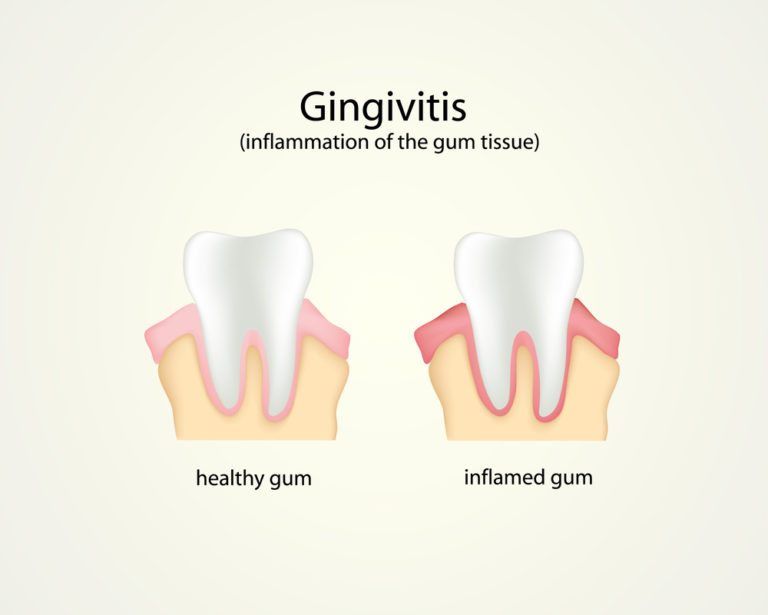Gingivitis & Periodontitis

Gingivitis and periodontitis are gum diseases caused by a proliferation of bacteria along and beneath the periodontal tissues. Gingivitis is the mildest form of periodontal disease, beginning with minor symptoms like gum inflammation. Although it is highly treatable, gingivitis is often left untreated and allowed to progress into an advanced stage of a periodontal disease known as periodontitis. Though still treatable, periodontitis requires more invasive treatments to prevent total tooth loss. The symptoms of gum disease may include:
- Â Reddened or swollen gums
- Gum tenderness
- Gums that easily bleed
- Persistently bad breath
- Receding gum line
- Gums that have pulled away from the base of the teeth, forming ‘pockets’
- Loose teeth
Did you know…
that gingivitis and periodontitis are both highly preventable diseases? Although approximately half the U.S. adult population suffers from some form of gum disease, many could have prevented it by brushing and flossing regularly, as well as visiting the dentist for periodic exams and professional teeth cleanings. Avoiding bedtime snacking or consuming foods that are high in sugar can also prevent the onset of periodontal disease, as can avoiding tobacco products, such as cigarettes.
Frequently Asked Questions
Do I need treatment for gingivitis or periodontitis?
If you are experiencing any symptoms of gum disease, seek treatment immediately. Failure to treat a periodontal disease can allow the condition to progress, eventually causing irreversible damage, such as tooth loss.
What should I expect during gingivitis or periodontitis treatment?
Your treatment will depend on the extent of your gum disease. If you are diagnosed with the beginnings of gingivitis, you may be given a take-home treatment or undergo an in-office scaling and root planing treatment. If your periodontal disease is more advanced, you may need gum surgery to remove harmful bacteria and restore damaged gums. In-office treatments are performed under a local anesthetic and sometimes sedation to reduce procedural discomfort.
Will I need to follow any special instructions after my treatment?
Yes. You may be prescribed an at-home antibiotic to take following your treatment. Your periodontist may also recommend consuming only soft foods in the days following your procedure, as well as use of ice packs to reduce swelling and inflammation. Exact instructions will vary according to the type of treatment, so contact your periodontist’s office for further questions about post-procedural self-care.
